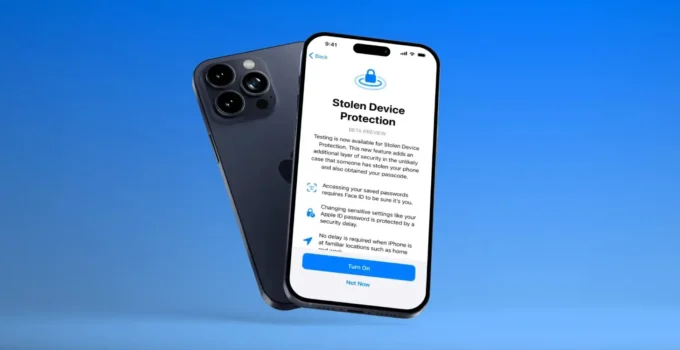Apple’s iOS 17.3 Update Adds ‘Stolen Device Protection’ to Boost iPhone Security. Apple’s iOS 17.3 update introduces a pivotal security feature for iPhone users – “Stolen Device Protection.” This new addition is designed to enhance the security of your iPhone in the unfortunate event of theft, especially if the thief has access to your device’s passcode.
Apple Enhances AirPlay 2 with Simpler Multi-Device Streaming and Dynamic Volume Control
“Stolen Device Protection” is an innovative feature that adds an additional layer of security beyond the standard passcode. It requires users to authenticate with Face ID or Touch ID for performing certain sensitive actions. These actions include accessing passwords or passkeys stored in iCloud Keychain, disabling Lost Mode, erasing all content and settings, and using payment methods saved in Safari, among others.
For actions that are particularly sensitive, such as changing the Apple ID password associated with the iPhone, the feature introduces an extra step. After the initial biometric authentication, there’s a mandatory one-hour waiting period before the user must authenticate again. Interestingly, Apple notes that this delay will not apply when the iPhone is in familiar locations like home or work.
The implementation of “Stolen Device Protection” comes in response to increasing incidents of iPhone thefts where thieves exploit knowledge of the user’s passcode. In one such case, a thief reportedly stole over $300,000 by observing iPhone users inputting their passcodes in public places before stealing their devices.
The feature’s requirement for biometric authentication, coupled with a time delay for re-authentication, significantly bolsters the security of your device. It is particularly effective when you are away from trusted locations. The actions requiring Face ID or Touch ID authentication with this feature enabled cover a range of sensitive tasks, including viewing iCloud Keychain data, erasing device content, and using stored payment methods.
For some actions, such as changing your Apple ID password or updating certain security settings, the feature adds a further layer of protection by requiring a second biometric authentication after an hour. This delay is crucial for preventing unauthorized changes during situations where the thief has access to both the device and the user’s passcode.
Turning on “Stolen Device Protection” offers enhanced security with minimal impact on user experience. In cases where Face ID or Touch ID is not functioning, the iPhone remains usable for most functions, except for specific sensitive actions. This means you can still make calls, send texts, and use apps normally.
In the event of a problem with your device, such as a malfunctioning Face ID or Touch ID sensor, you can turn off the additional protection using your passcode. This is particularly useful if you need to take your iPhone for servicing.
Activating “Stolen Device Protection” on your iPhone is straightforward. With iOS 17.3 installed, go to the Settings app, select Face ID & Passcode, and then enable the “Stolen Device Protection” feature. This simple activation process adds a robust security layer to safeguard your iPhone against unauthorized access, especially in cases of theft or loss.
In summary, the “Stolen Device Protection” feature in iOS 17.3 is a significant enhancement in iPhone security. It provides users with an extra level of safety, ensuring that their private data remains secure even in the event of a device being stolen. With the increasing reliance on smartphones for personal and financial data, features like this are crucial for protecting users from potential security breaches.
